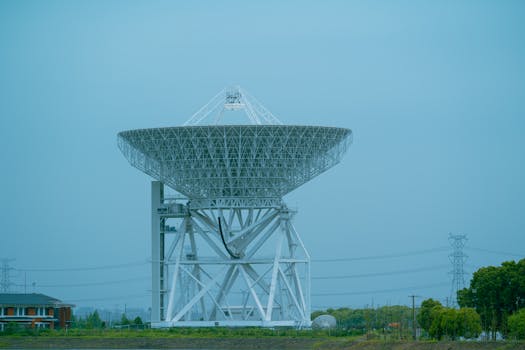Orbiting Innovations: Key Updates in Satellite Telecommunications Technology

Orbiting Innovations: Key Updates in Satellite Telecommunications Technology
Orbiting Innovations: Key Updates in Satellite Telecommunications Technology have been transforming the way we communicate and access information. The satellite telecommunications industry is experiencing significant advancements, with innovations in satellite technology, constellation networks, and more. In this article, we will explore the key updates and their impact on the industry.
Satellite telecommunications technology has come a long way since its inception. From the early days of satellite communications to the current era of high-throughput satellites, the industry has undergone significant transformations. One of the key factors driving these innovations is the increasing demand for high-speed internet and connectivity. With the rise of digital technologies and the Internet of Things (IoT), the need for reliable and fast connectivity has never been more pressing.
The development of new satellite constellations, such as OneWeb and Starlink, is revolutionizing the satellite telecommunications industry. These constellations comprise hundreds of small satellites that work together to provide global coverage and high-speed internet connectivity. The use of small satellites has reduced the cost of launching and operating satellites, making it more accessible for companies to enter the market. Additionally, the development of advanced propulsion systems and satellite architectures has improved the efficiency and performance of satellites.
Advancements in Satellite Technology
Recent advancements in satellite technology have enabled the development of more efficient and powerful satellites. The use of advanced materials and manufacturing techniques has reduced the weight and size of satellites, making them more cost-effective to launch and operate. Furthermore, the development of new propulsion systems, such as electric propulsion and advanced ion engines, has improved the maneuverability and lifespan of satellites.
The integration of artificial intelligence (AI) and machine learning (ML) technologies into satellite systems is also transforming the industry. AI-powered satellites can analyze vast amounts of data, detect patterns, and make decisions in real-time, enabling more efficient and effective operations. ML algorithms can be used to predict and prevent satellite failures, reducing downtime and improving overall system reliability.
Impact on the Industry
The innovations in satellite telecommunications technology are having a significant impact on the industry. The development of new satellite constellations and advancements in satellite technology are enabling more efficient and cost-effective connectivity solutions. This, in turn, is driving the growth of the satellite telecommunications market, with new companies and services emerging to meet the increasing demand for high-speed internet and connectivity.
The satellite telecommunications industry is also experiencing a shift towards more collaborative and open architectures. The use of open standards and APIs is enabling the development of more interoperable and flexible systems, allowing companies to integrate different technologies and services more easily. This is driving innovation and reducing barriers to entry, making it easier for new companies to join the market.
Future Outlook
The future of the satellite telecommunications industry looks promising, with continued innovations and advancements on the horizon. The development of new satellite constellations and technologies, such as quantum communications and satellite-based navigation, will continue to drive growth and transformation in the industry.
The increasing demand for high-speed internet and connectivity will also drive the growth of the satellite telecommunications market. As more companies and individuals rely on digital technologies, the need for reliable and fast connectivity will continue to grow. The satellite telecommunications industry is well-positioned to meet this demand, with its ability to provide global coverage and high-speed internet connectivity.


